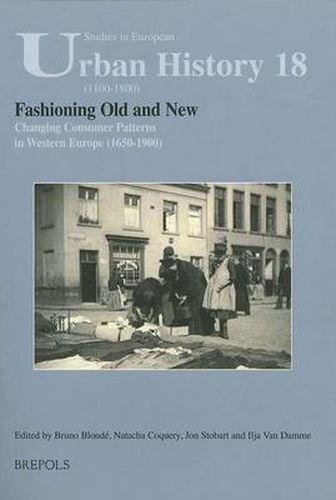Readings Newsletter
Become a Readings Member to make your shopping experience even easier.
Sign in or sign up for free!
You’re not far away from qualifying for FREE standard shipping within Australia
You’ve qualified for FREE standard shipping within Australia
The cart is loading…






A continuing ‘cry for the new’, it is said, drives present-day consumerism. People are producing and buying new goods in ever-larger quantities. However, in the past, consumer choices for new products were paralleled and even overlapped by structurally embedded practices such as re-use, recycling and resale. Unfortunately far too little is known about these important practices. The ‘birth of a consumer society’ was grounded not only in the appearance of new products and new industries; a similar drive manifested itself in the handling, buying and selling of ‘second-hand’. In this book then the editors confront and integrate historical research on the world of the new and the old. Papers focus on the relationship between material culture and novelty, fashion and innovation on the one hand; and/or patina, second-hand and re-cycling on the other. Differences existed in the use of old and new products according to time, place, social and gender groups. By paying close attention to this historical diversity, this book explores the changing meanings and motivations of consumption. The geographical coverage will be an urban one. The studied time frame will be ‘the long eighteenth-century’ (from circa 1650 until 1900). It was only then that rapid fashion changes, new imports and spreading industrialization changed the existing material culture dramatically. However, comparisons crossing time and place do place sweeping ‘modern’ assumptions in perspective. After all: who can decipher how the concepts old and new are changing today, with the current popularity of more responsible (social and ecological) forms of consumption and recycling, and with vintage-clothing and antique furniture back en vogue?
$9.00 standard shipping within Australia
FREE standard shipping within Australia for orders over $100.00
Express & International shipping calculated at checkout
A continuing ‘cry for the new’, it is said, drives present-day consumerism. People are producing and buying new goods in ever-larger quantities. However, in the past, consumer choices for new products were paralleled and even overlapped by structurally embedded practices such as re-use, recycling and resale. Unfortunately far too little is known about these important practices. The ‘birth of a consumer society’ was grounded not only in the appearance of new products and new industries; a similar drive manifested itself in the handling, buying and selling of ‘second-hand’. In this book then the editors confront and integrate historical research on the world of the new and the old. Papers focus on the relationship between material culture and novelty, fashion and innovation on the one hand; and/or patina, second-hand and re-cycling on the other. Differences existed in the use of old and new products according to time, place, social and gender groups. By paying close attention to this historical diversity, this book explores the changing meanings and motivations of consumption. The geographical coverage will be an urban one. The studied time frame will be ‘the long eighteenth-century’ (from circa 1650 until 1900). It was only then that rapid fashion changes, new imports and spreading industrialization changed the existing material culture dramatically. However, comparisons crossing time and place do place sweeping ‘modern’ assumptions in perspective. After all: who can decipher how the concepts old and new are changing today, with the current popularity of more responsible (social and ecological) forms of consumption and recycling, and with vintage-clothing and antique furniture back en vogue?